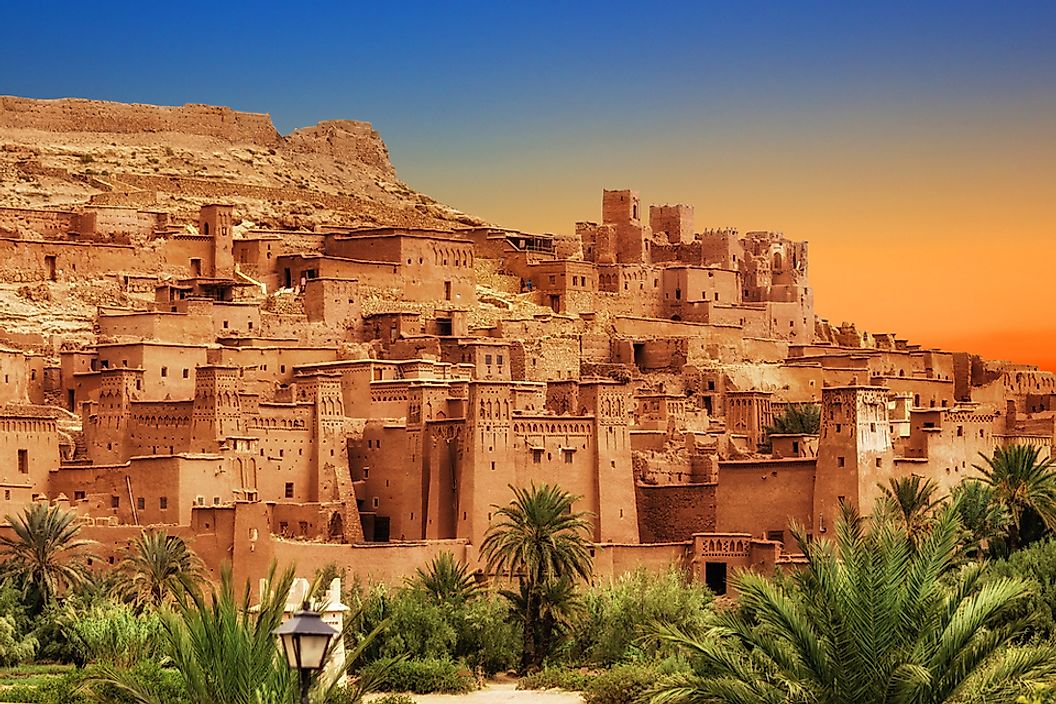Where is Morocco?

Morocco is located in the Maghreb region of Northwest Africa. Officially known as the Kingdom of Morocco, it neighbors Algeria to the East, the Atlantic Ocean to the west, Mauritania to the south, and the Mediterranean Sea to the North. The country is known for its rich history, diverse culture, magnificent tourism, and distinctive cuisines. Although Rabat is Morocco’s capital city, the largest city by population is Casablanca.
History
Morocco’s history has been influenced by its geographic position bordering both the Atlantic and the Mediterranean Sea. The region was first controlled by the Phoenicians who were later replaced by the Romans, Vandals, and Greeks. In the 7th century, Arabs occupied the region, with their civilization surviving to date. Morocco became a French protectorate in 1912 following the Treaty of Fes. After the Second World War, it began to agitate for freedom and independence through the Independence Party Movement led by Sultan Mohammed V who was exiled in France in 1953. His predecessor Mohammed Bin Aarafa took over and persistently pushed for Morocco’s independence, which was granted on March 2, 1956.
Geography
Morocco’s landscape comprises of mountain slopes that transition to plateaus and valleys. The central region is dominated by the Atlas Mountain while the Rif Mountain covers the north. The Jebel Toubkal is the highest point in Morocco rising 13,665 feet above sea level while Sebkha Tah is the lowest level rising 180 feet below sea level. The south eastern region of the country is covered in a blanket of the world’s third largest desert, Sahara desert that stretches 3,600,000 square miles. The main source of water in the country is the Moulouya River which gets its water from the Atlas and empties into the Mediterranean Sea.
Demographics
Morocco has a population of 34,343,219 people, comprising of the Arabs, Berbers, and Sunni Muslims. The Berbers are indigenous groups from North Africa and have dominated Morocco for over five thousand years. The minority groups in the country include the Gnaoua and Haratin who are highly mixed or black. There are also Jewish minority groups and foreign residents from Spain and France. The age structure of the population comprises of 30.5% aged between 0-14 years, 64.3% aged between 15 and 65, and 5.2% aged over 65, meaning the majority of the population is productive.
Economy
Being a constitutional monarchy kingdom, Morocco is considered to have a liberal economy governed by the law of supply and demand. The country is a major player in Africa economic affairs and is ranked as the fifth African country in terms of the purchasing power parity. The service industry accounts for over half of the country’s GDP while agriculture, manufacturing, and mining make the other half. The government has continued to implement policies aimed at promoting competitiveness, diversification, and economic liberalization.
Culture
Morocco is ethnically diverse and rich in culture and civilization. The official language in Morocco is classical Arabic though the majority of the population speaks in distinct Morocco-Arabic dialects. French is an unofficial language and is used primarily for economic purposes. Furthermore, the country is slowly adopting English as a second foreign language. Morocco is known to have a diversity of cuisines following centuries of interaction with the outside world. In particular, Moroccans love drinking mint tea sweetened with sugar. As part of their culture, the people of Morocco love football, which is the country’s most popular sport among all generations.











